Splinterlands - From a simple passion to a thriving economic ecosystem.
For some, #Splinterlands is a #card #game, a strategy to dominate your opponents in fast-paced, suspenseful battles. For me, Splinterlands has been, over the years, a source of curiosity, investment, and, above all, a lesson in how a project can evolve from a simple idea to a complex universe.
I've been here a long time. I've seen the game grow, i've seen the market change, strategies change, and new layers of gameplay are added. And while i've always appreciated the battles and card collecting, i have to admit that one component kept me out of it for a long time: virtual lands.
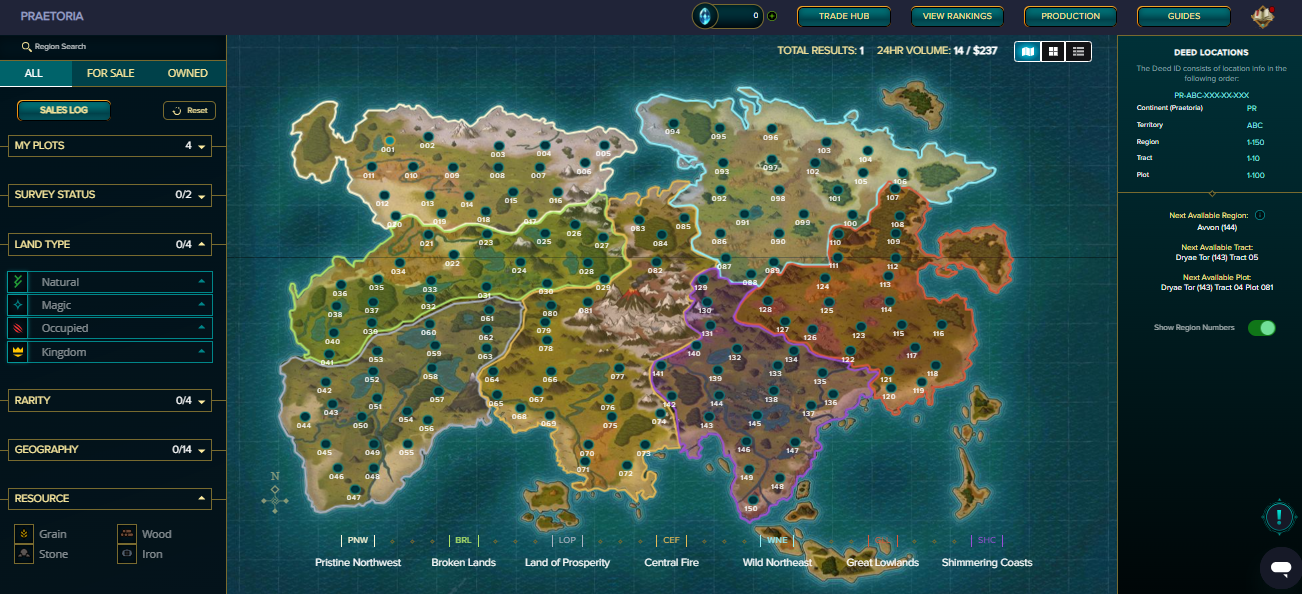
A New Era in Splinterlands: A Changed Vision, a Rediscovered Value. Lands Become Truly Valuable.
For a long time, lands were a passive asset for me. A collector's item, a promise for a better future for the game, but not something useful in the present. I owned them, but more as a speculation. I had four plots and, frankly, i was willing to give up some of them. I put them up for sale, thinking i would recoup some of my investment, because i didn't see the point of using them. After all, what good is a plot of land if it doesn't produce anything concrete for my game strategy? I thought i would use the resources obtained from the sale to invest in books or other tokens. Little did i know that this decision would change radically.
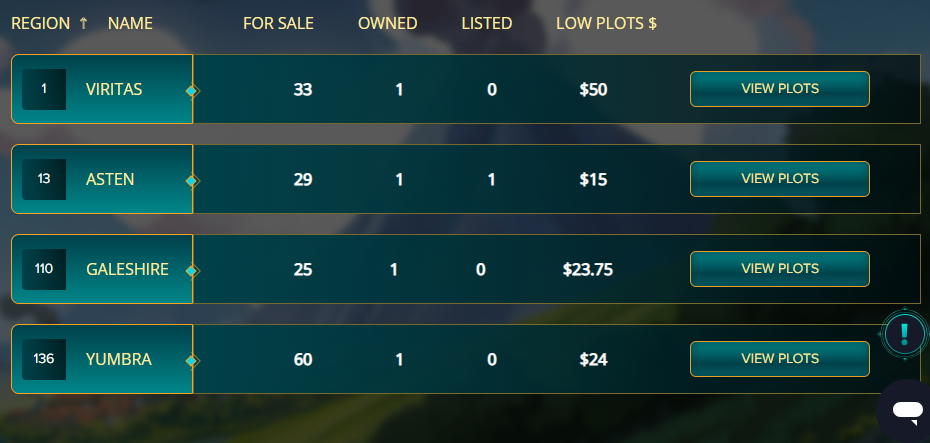
This mentality evaporated almost instantly when the development team implemented the new production systems. I logged in one day and saw that my lands, which were sitting quietly in my portfolio, had come to life...yep, they can produce a lot. It wasn't just grain, the initial resource, anymore. Suddenly, i could produce wood, stone, and iron. These are fundamental resources, raw materials that are the foundation of any economy, even a virtual one. I immediately understood that these new materials were the missing piece of the puzzle, the basic elements needed to create future card sets and build complex structures on our lands.
And, as if that weren't enough, i discovered other resources, much rarer and more valuable, such as Aura. It's an extraordinary feeling to see your land producing not only simple materials, but also a magical essence capable of unlocking new horizons. Along with Aura, those research points (called Research Points) appeared, a strategic resource that allows you to advance in knowledge and optimize production. All these additions completely transformed the perceived value of my lands. From a simple asset that i wanted to sell, i began to see it as a long-term investment, a true machine for progress in the game.

Economic Infrastructure - Liquidity Pools and Parity
Another aspect that finally convinced me was the implementation of liquidity pools. These are not just technical functions, but represent the economic heart of the game. For a player who relies on resource production, nothing is more important than market stability. Seeing that there is a pool to maintain parity between DEC and new resources, i understood that the development team had not only thought about gameplay, but also economic sustainability.
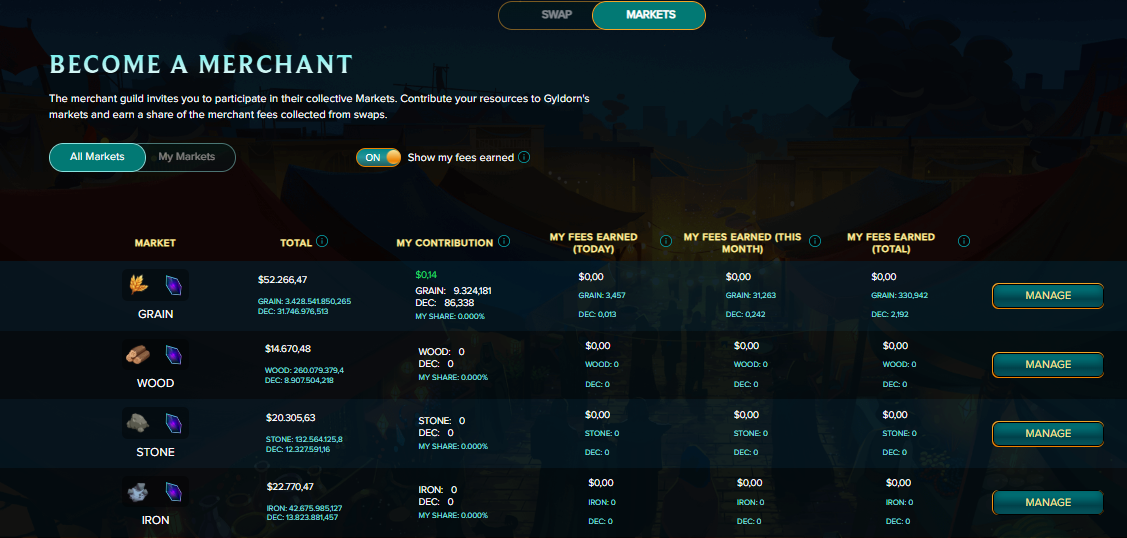
Liquidity #pools provide a crucial buffer. It prevents massive price fluctuations and ensures that the labor put into producing the resources on my land has a real and constant value. Whether it's wood, stone, iron, or grain, i know i can convert them into #DEC at a predictable rate, or, more importantly, use them to invest in other needed resources. This solid system has transformed the game from a speculation game into a true economic simulator, where every production and investment decision counts.

Final decision: Withdrawing lands from sale...okay 😊i admit, only one is still listed, but i don't think it will be for long.
With all this new information in my mind, i had a revelation. The lands i had been holding for sale, the ones i wanted to sell for a quick profit, suddenly became the worst decision i could have made. I realized that the value of its production in the long term far exceeded any amount i would have gotten from selling it. Those lands stopped being just a piece of code, and became a vital part of my game strategy.
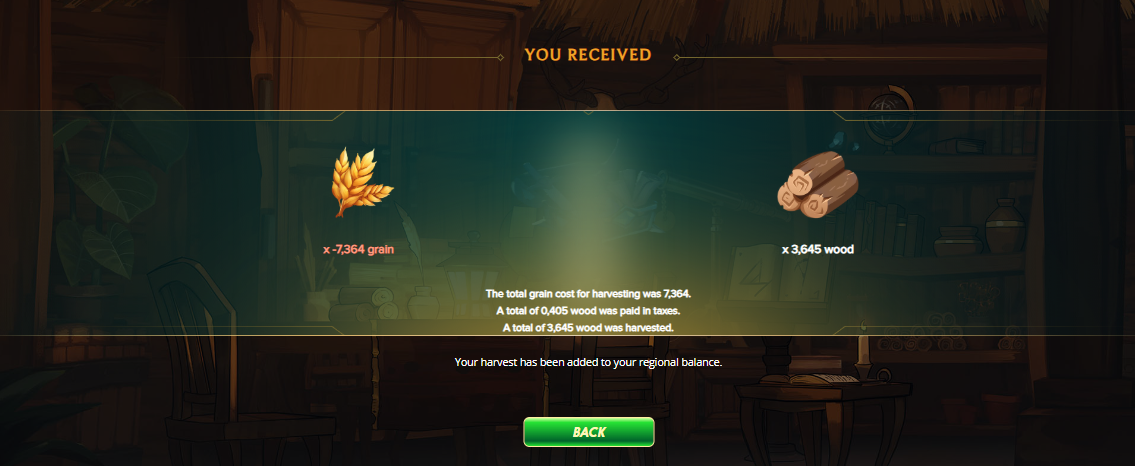
I have currently purchased and set up all four of my lands for production. Each plot works for me, producing the resources i need to advance. Even with all these changes, i admit that there are still many details that I don't fully understand. It's an ever-expanding world, and the systems are getting deeper with each update.
Beyond the Lands - Exploring the Crafting System
In #Splinterlands, land production is not an end in itself, but a means to an end. This is where the crafting system comes in, another complex component that adds incredible depth. I found that within the crafting menu, things fall into three main categories: Crafting, Artifacts, and the Permit Office.
Under the Artifacts section, i found Totems - those essential items that come in various rarities (common, rare, epic, and legendary) and that, once placed on the land, give you production bonuses. They are another strategic layer, forcing you to decide whether it is worth investing in them to increase your long-term profitability.
In the Permit Office category, i understood that in order to build special buildings, you have to donate a portion of the Research Points you accumulate. This translates into obtaining Construction Permits, an element of progress that guarantees you the expertise needed to venture into more advanced crafting processes and experiment with new spells and charms on buildings.
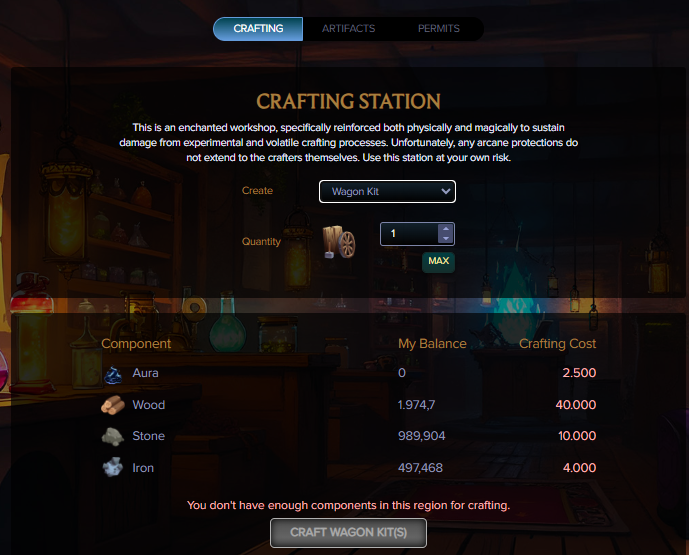
But the most fascinating part was discovering the items that can be produced in the Crafting section. For example, you can create an Auction Mark, an item used to participate in auctions for very special cards. We also discovered that you can produce Fortune Ticket and, most importantly, Midknight Potion, a potion that requires a considerable amount of Aura (40 Aura, to be exact). This confirms once again the invaluable value of this rare resource. And the most complex and expensive crafting item seems to be the Wagon Kit, which requires no less than 2500 Aura, 40,000 Wood, 10,000 Stone and 4,000 Iron. The numbers are staggering, but they clearly show how much can be invested in the game and how vast the potential is.
The land system, combined with the long-term vision of the development team, made me stay. I am no longer just a player, but a pioneer exploring a new digital continent. Splinterlands has proven that an #NFT game can be much more than a #collection of images. It can be a functioning economy, an engaged community, and an environment where strategic planning is as important as combat prowess.
For me, the journey in #Splinterlands is still one of personal evolution. I have moved from skepticism to acceptance, from passive investment to active involvement. And the lands, which at first seemed insignificant, have turned out to be the centerpiece of this new phase.